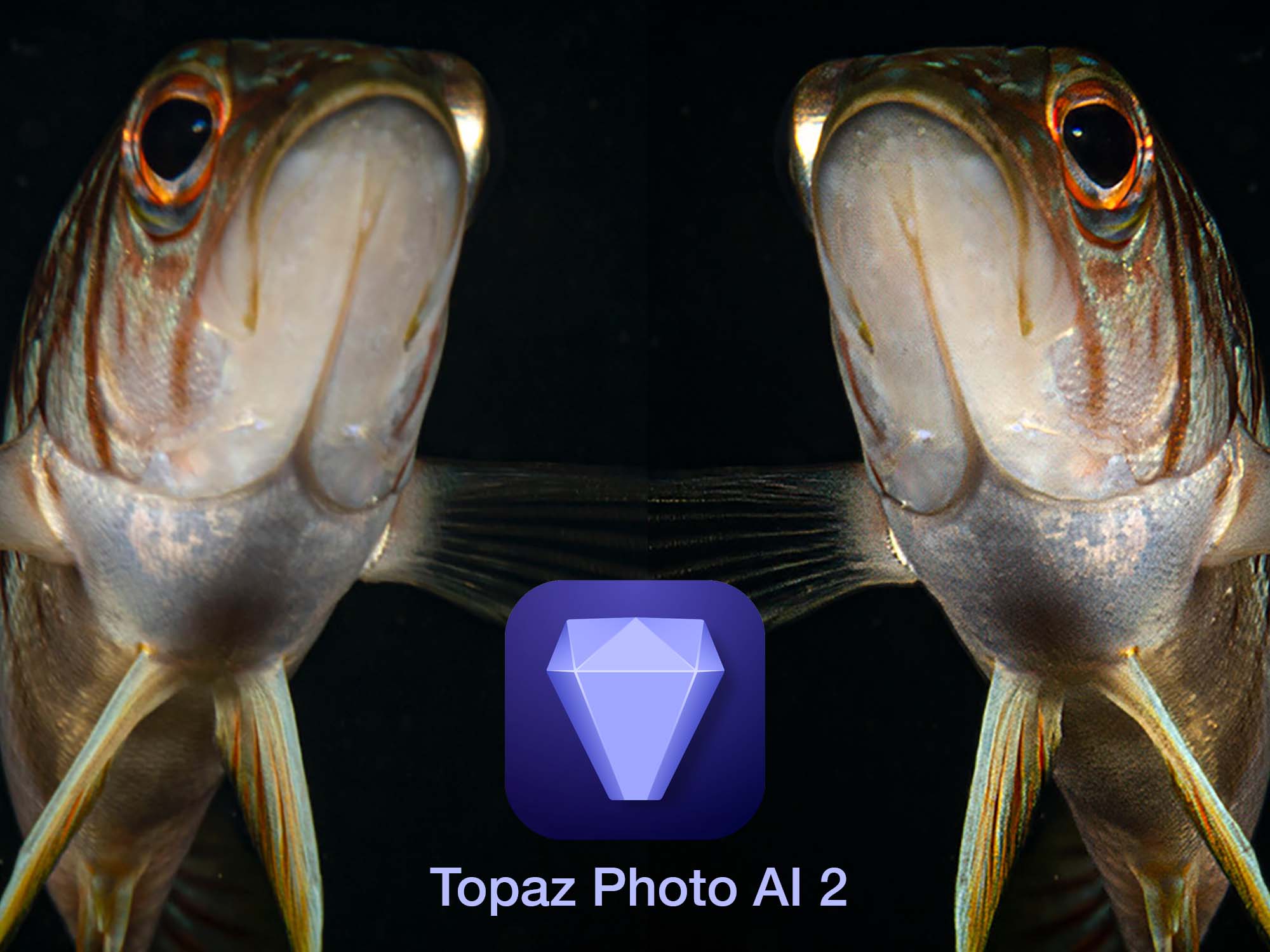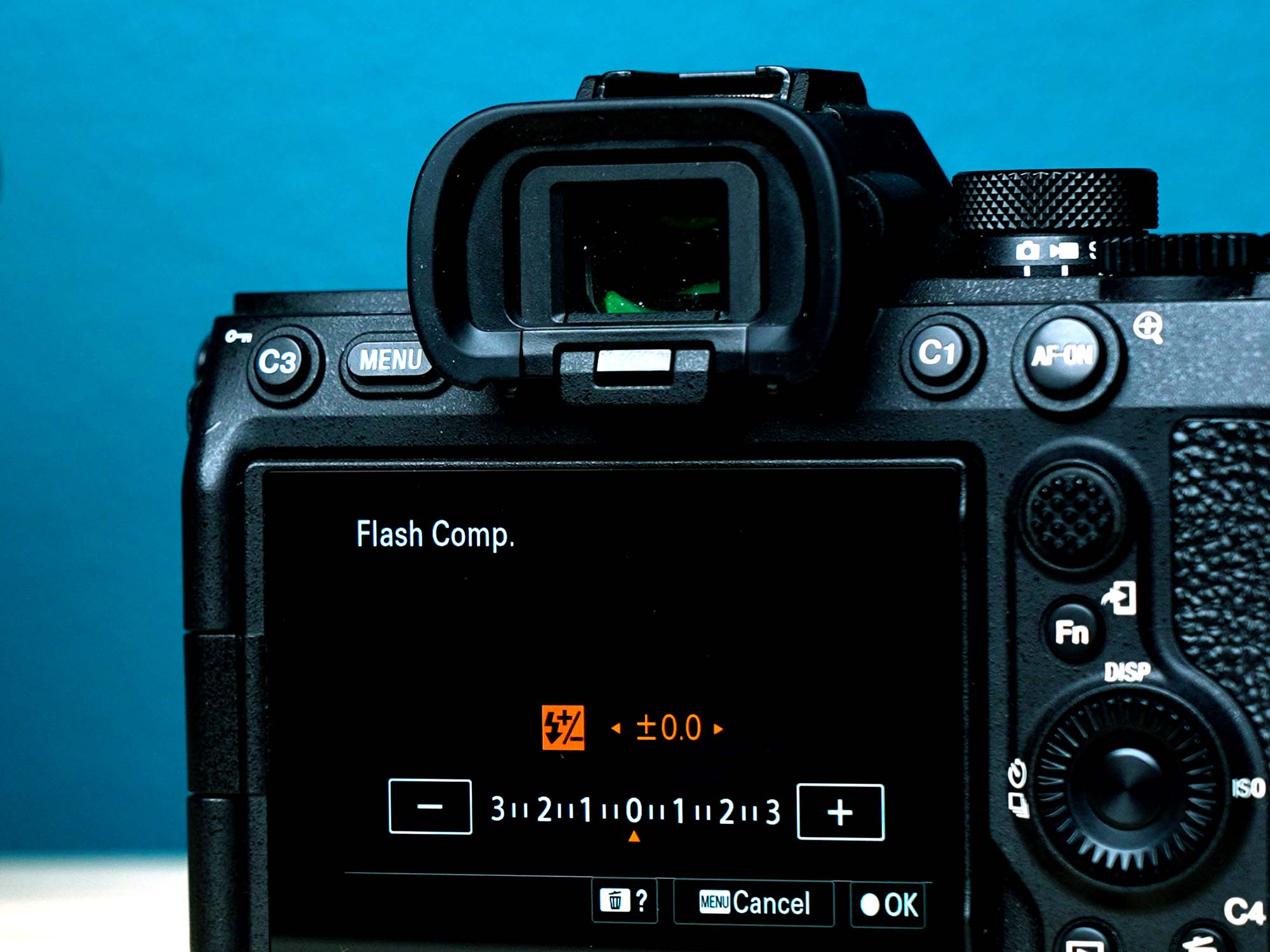Contributed by Lorenzo Terraneo
Cover Photo © 2024 David Fleetham; All other photos © 2024 Lorenzo Terraneo
Like most every professional underwater photographer, I traditionally always shoot with two strobes attached to my camera housing. But Ikelite asked me...
Can you take good wide photos with just one flash?
After almost a year I finally managed to dive again, and this time in the splendid marine parks of Ras Mahammed and Tiran (Sharm El Sheikh) with the Sinai Dive Club. Wide photography isn't usually my strong point as I specialize in super macro photography, but with the scenery of these backdrops it's almost a must.
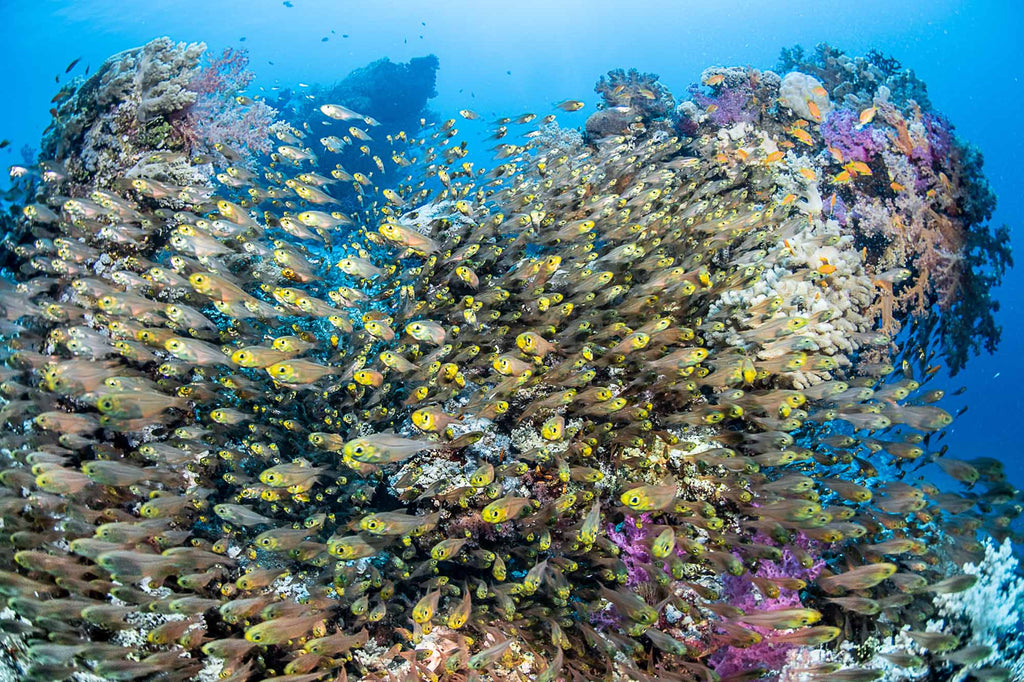
You're not going to capture a school of fish with a macro set-up. A single DS160 II strobe give the fish a perfect pop of color and also brings out the beautiful tones of the coral behind.
I therefore decided to set as my goal the study of lighting in depth using a single flash, so I could concentrate better on both the position of the flash and the power adjustment. My task was made easier thanks to the extreme power and coverage angle of my Ikelite DS160 strobe. This flash has a large battery and supported all of the 500 shots that I take on average in a day (three dives), without ever missing a beat.
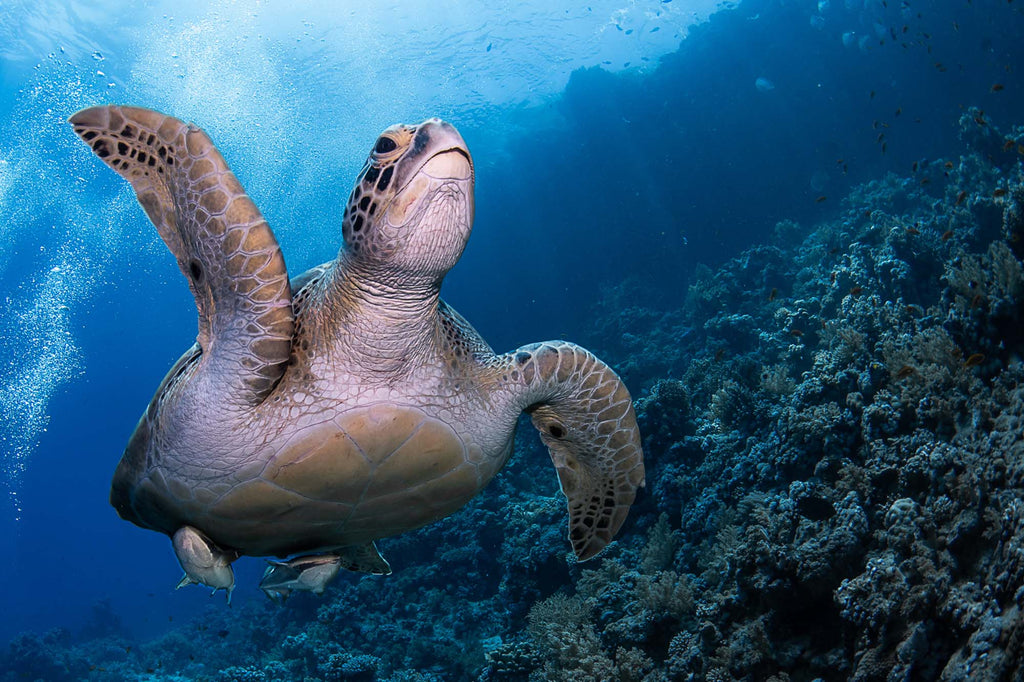
Many shots of animals swimming in open water can be easily lit by a single strobe. Anything more than 5-6 feet (1-2 meters) away is too far to be hit by a strobe anyway.
Having only one flash to manage and not two gave me a lot more time to first visualize the effect I wanted to achieve. I must say that in some middle conditions between close-up wide angle and extreme panoramas, the results that I obtained with one flash were much superior to those I could have obtained with two.
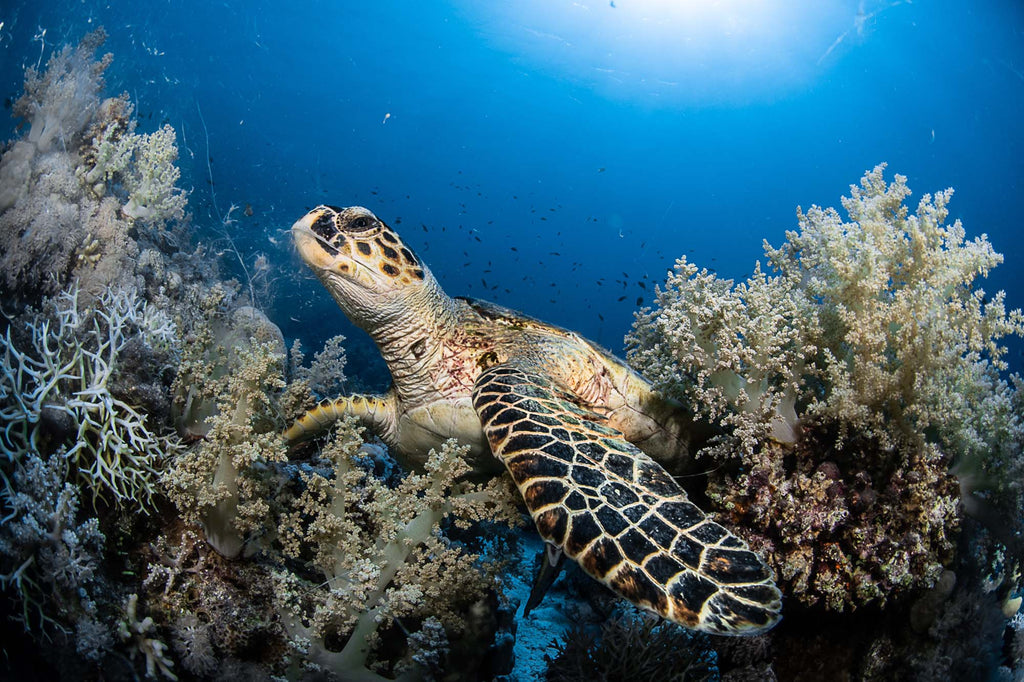
The fall-off of our DS160 II and DS230 strobes is so gentle that it provides a natural look that draws your attention to the subject and complements the overall framing of the photo.
Lighting Effects
The difference is created by the possibility of highlighting only the most important portion of the picture or even having the possibility of isolating a part of it and overshadowing the rest.
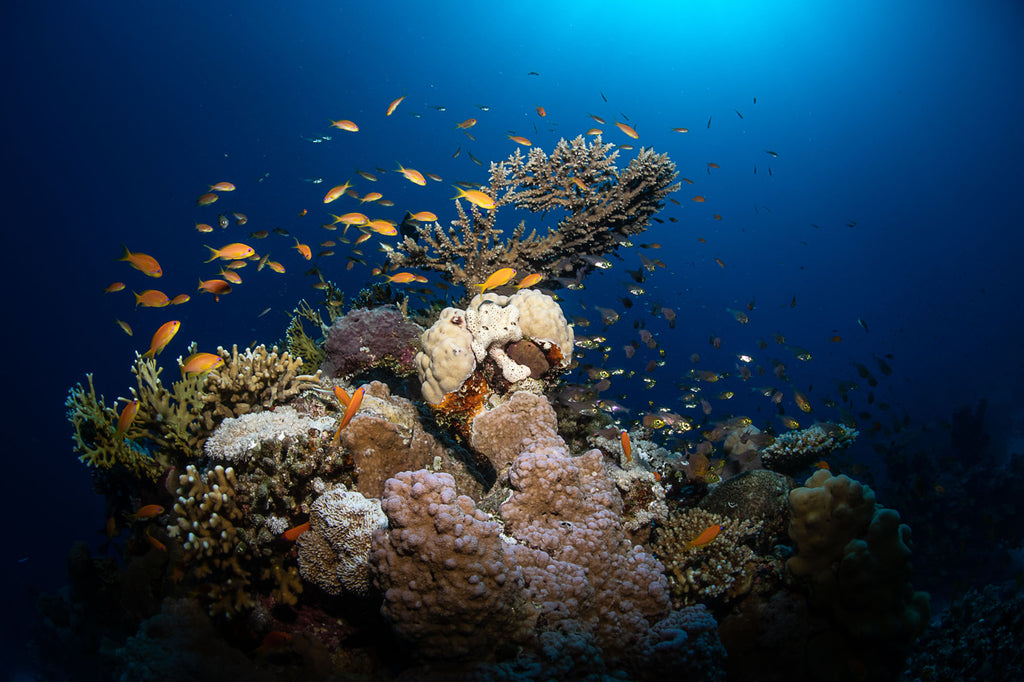
A single strobe can be positioned in unique ways to isolate part of your frame. Here the strobe light is central and angled slightly upward to create a pleasing vignette. The purposeful lighting draws your attention to the middle of the frame and makes you feel like you're looking into a fishbowl.
The next time I return to Sharm el Sheik I will surely test my new very powerful DS230 Strobe, which is brighter than the DS160 with a wider angle of coverage. Putting into practice the experience I gained this time so I can continue creating new light patterns with more awareness.

Intentional dark regions can add a sense of space to your image. Too much light in a swim-through can also increase backscatter.
Advantages of Shooting a Single Strobe
Shooting a single strobe can help to streamline your system, reducing the overall size and weight.
It's necessary to adjust the position of your strobe(s) throughout a dive to adjustment throughout your dives as your distance to the subject changes. If you're still learning about camera settings and underwater photography techniques, it can be easier to manage the positioning of a single light source.
It's also more affordable to shoot with a single strobe.

A sandy bottom reflects your strobe light which in a way increases the effective output.
Using a Dual Cord with a Single Strobe
Do not take a dual sync cord underwater with a cap on one end to shoot a single strobe. The dust cap provided with Ikelite sync cords is not waterproof. Use a single sync cord when shooting only one strobe.
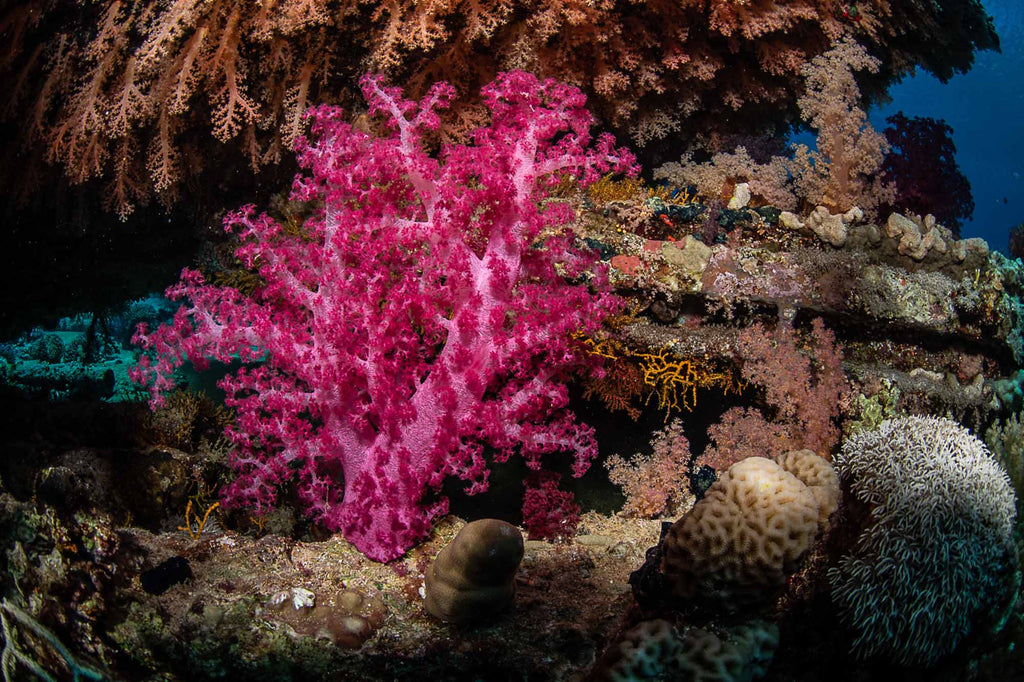
Most colors other than blue and green are "invisible" once you go beyond about 40 feet (12 meters). You'll want at least one strobe to bring out the reds, pinks, and oranges that will otherwise be missing from your underwater photos.
Advantages of Dual Strobes
The addition of light using a strobe adds color back to your underwater photos. In many situations underwater, more light means more color and greater clarity. The beam patterns of two strobes put together will cover a wider field of view.
Traveling with two strobes is also a good idea because you'll have a back-up if something unexpected goes wrong.
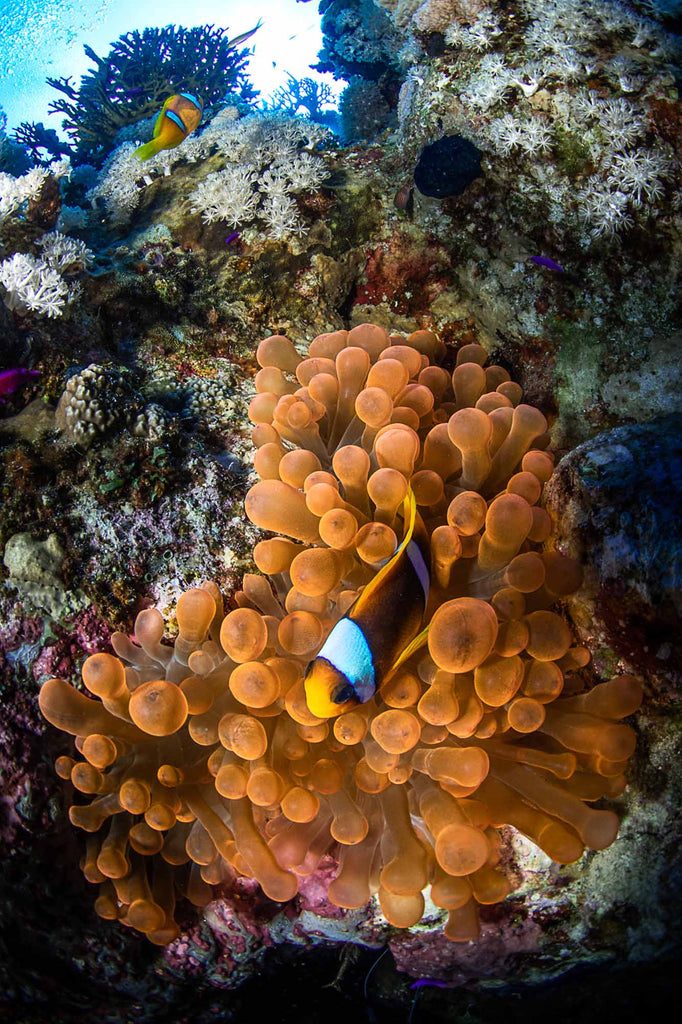
Close focus wide angle (CFWA) is no problem with a single strobe if you get the right angle on your subject.
One Large Strobe vs Two Small Strobes
You can often purchase two compact strobes for the price of a single professional grade strobe. Which is better?
Compact strobes have an advantage of being smaller and lighter. And it's good to carry two strobes to have a backup on hand.
However, a professional grade strobe has the advantages of better light quality, a softer beam pattern, and faster recycle time. A fast recycle time is critical when shooting quick moving subjects like sharks, turtles, and dolphin.
Ultimately it depends on the subject and what camera system you're shooting. A macro shot can easily be covered by almost any underwater strobe. But the widest fisheye lenses on a full frame sensor may require two professional grade strobes to adequately light the scene.
 Ambassador Lorenzo Terraneo, from Milan, Italy, works in the world of communication and web marketing and is a journalist enrolled in the Register. In 2010, he joined the strong passion for the sea and diving with the one for photography that always accompanied him since his first analog Nikon SLR. Passionate about marine and terrestrial biology, he is always looking in his photos to recreate the magical meeting between the wonders of nature and human emotions aroused by unusual shapes and colors. Therefore, not naturalistic photos in the strict sense, but moments of artistic beauty (nature art) according to the human canon, which nature expresses incessantly. Read more...
Ambassador Lorenzo Terraneo, from Milan, Italy, works in the world of communication and web marketing and is a journalist enrolled in the Register. In 2010, he joined the strong passion for the sea and diving with the one for photography that always accompanied him since his first analog Nikon SLR. Passionate about marine and terrestrial biology, he is always looking in his photos to recreate the magical meeting between the wonders of nature and human emotions aroused by unusual shapes and colors. Therefore, not naturalistic photos in the strict sense, but moments of artistic beauty (nature art) according to the human canon, which nature expresses incessantly. Read more...
Additional Reading
5 Situations Where You Need a Strobe Underwater [VIDEO]
The Myth of TTL Strobe Exposure Underwater
Sea Turtle Portraits with DS230 Strobes
Connecting Two Strobes to your Underwater Housing
Choosing Strobes for a Compact Fiber Optic System
Choosing Strobes for Ikelite TTL Systems
TTL Underwater Strobes for Canon R10 (and R7) // Setting It Up [VIDEO]












